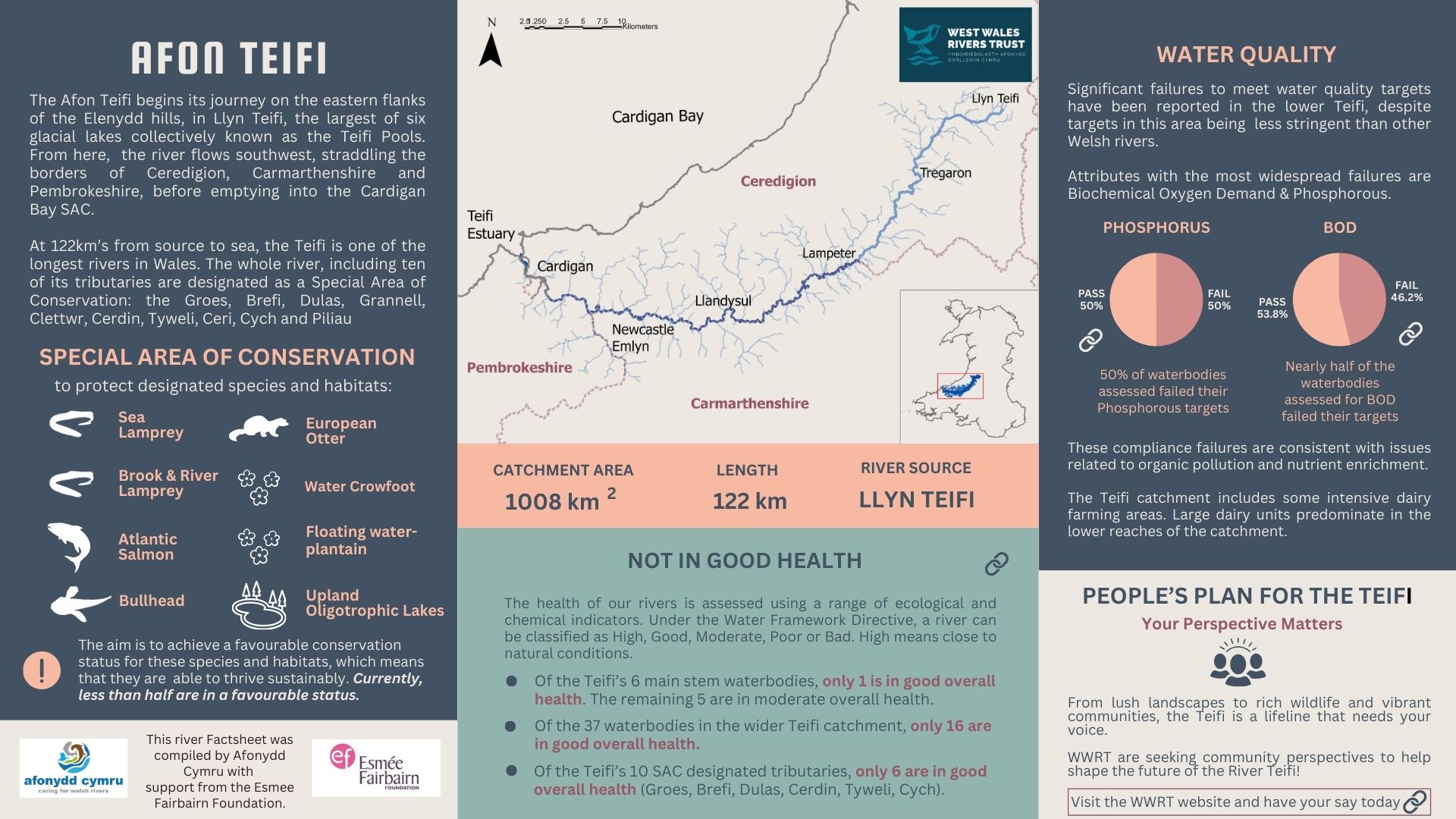September 2024
In six glacial llyns high on the western side of the Cambrian Mountains begins what has often been described as the longest river entirely in Wales. From Llyn Teifi, the Afon Teifi flows in a westerly direction, past the remains of the Cistercian Abbey of Strata Florida before turning southwest and into one the finest examples of raised peat bogs in lowland Britain. Designated a National Reserve, Cors Goch Glanteifi translates as ‘red bog on the banks of the Teifi,’ descriptive of the colour of its vegetation.
This peat bog could have something to do with the Teifi’s name. The exact source is unclear, but it is thought to be similar to the Welsh name for the Thames, “Afon Tafwys,” relating to the river’s dark waters.
From Cors Goch Glanteifi the river then passes through Tregaron, Llanddewi Brefi, Lampeter and Llanybydder before returning to a more westerly direction through Llandysul, Newcastle Emlyn, Cenarth and Llechryd. As the Teifi flows towards Cardigan and its estuary beyond, it travels through the steep-sided Cilgerran Gorge. Reaching the sea after 121km, the Teifi is in fact slightly shorter than the Usk and Tywi, at 126km and 122km respectively.
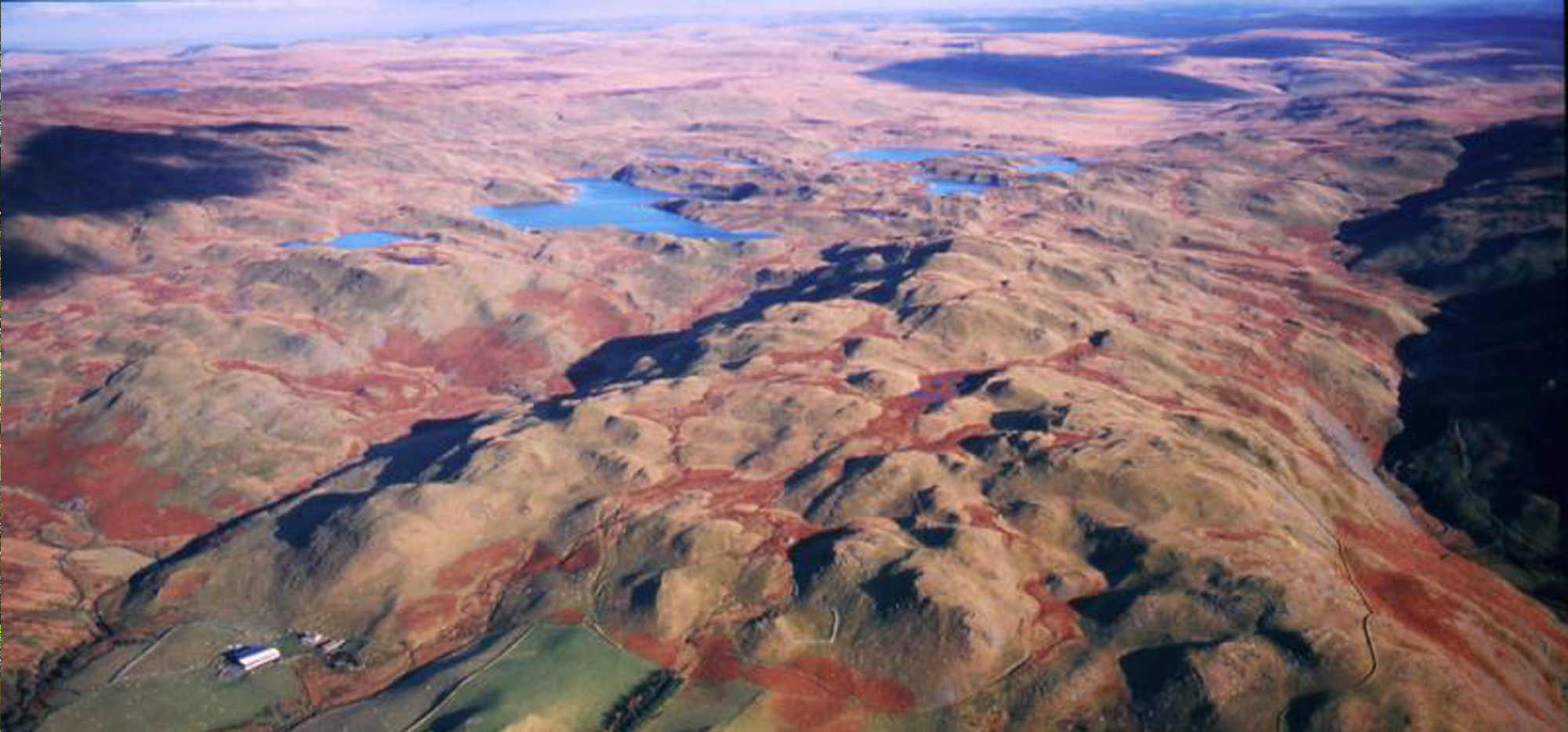
The Teifi Pools, high on the western side of the Cambrian Mountains, which it used to be said were so deep as to be unfathomable. Llyn Teifi is the largest of these pools (second from left in this photo) and the official source of the Teifi. Photo: Toby Driver/People’s Collection Wales
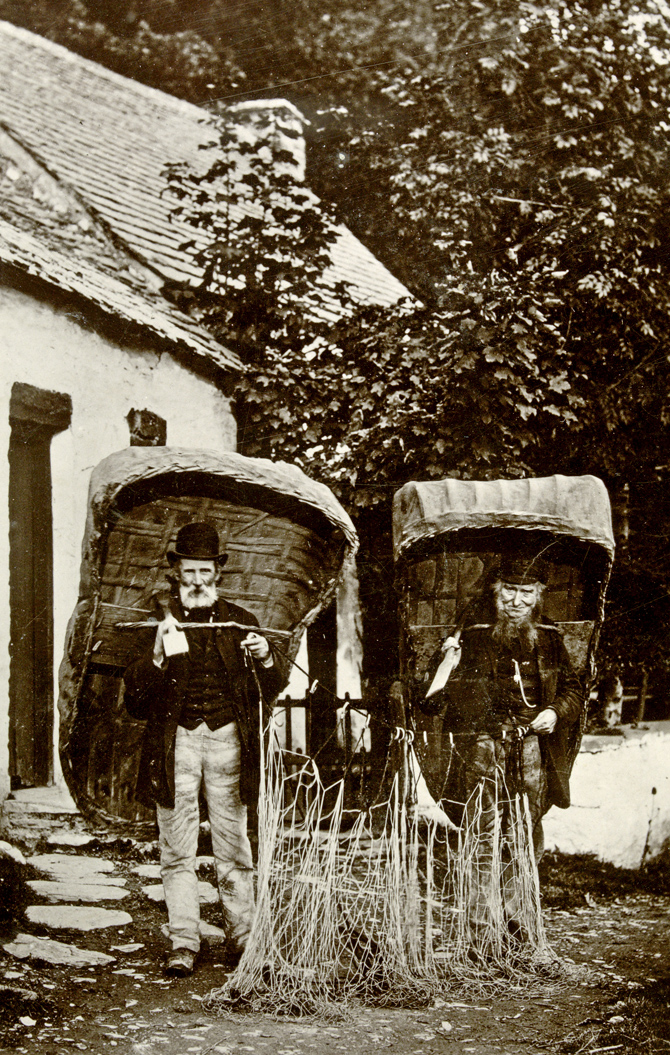
Coracle fishermen on the Afon Teifi in the early 1900s. Photo: People’s Collection Wales
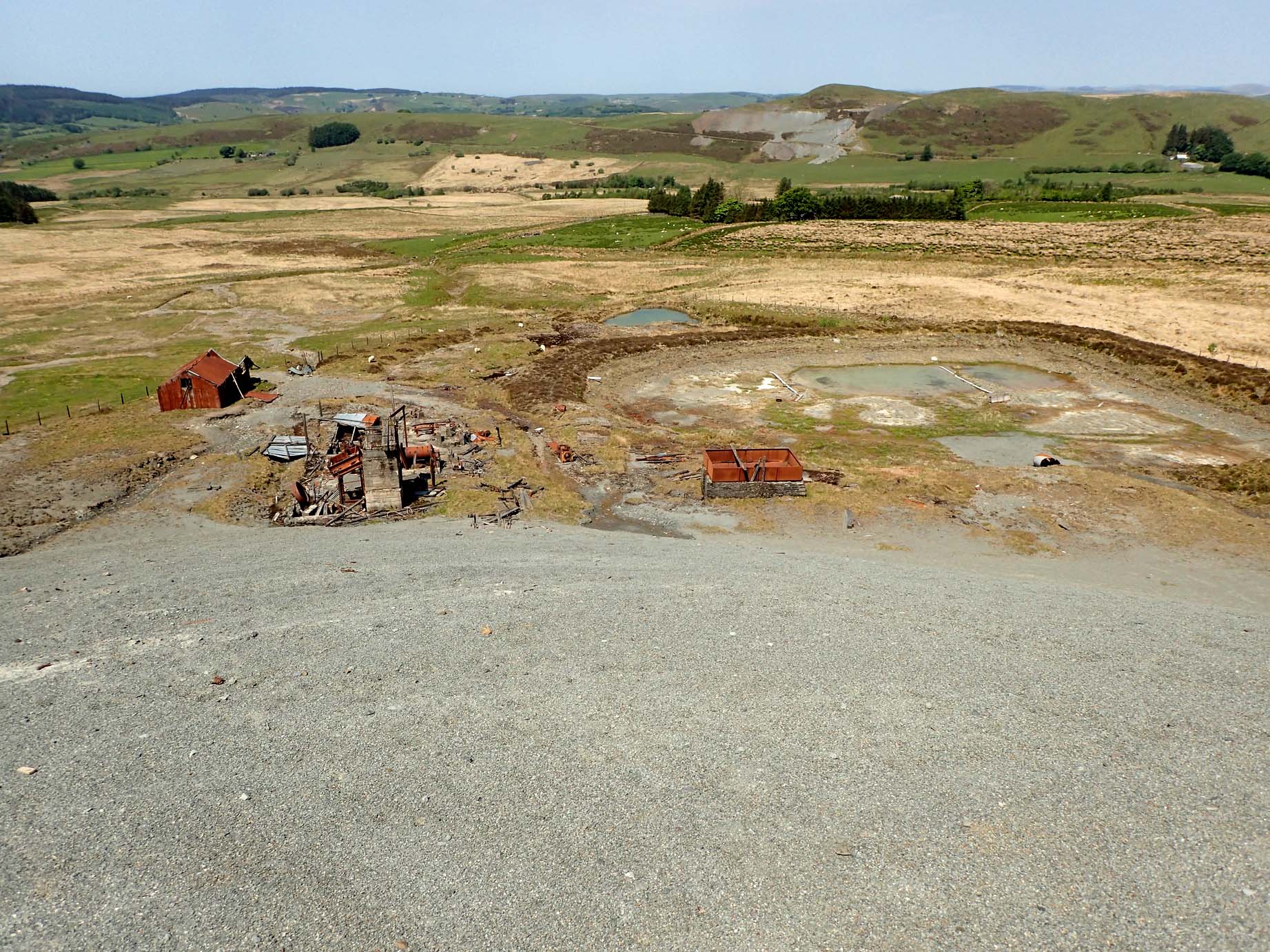
The remains of Esgair Mwyn mine, the largest single source of lead for the Teifi. According to Natural Resources Wales, the old mine is still having a negative impact on the Teifi’s water quality today, despite closing in 1927. Photo: People’s Collection Wales under Creative Commons CC BY-SA 3.0 Licence
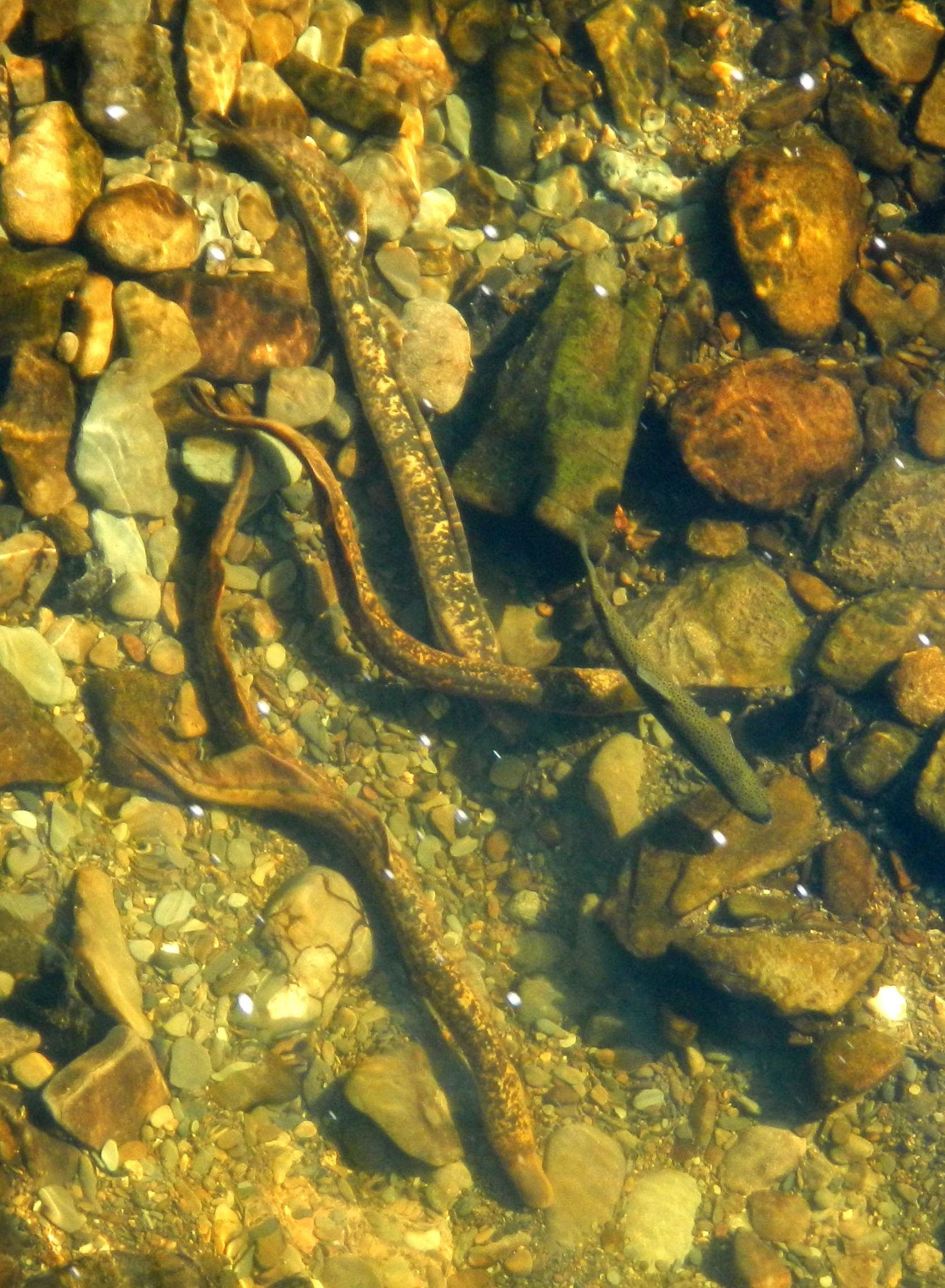
Sea lamprey (Petromyzon marinus) during spawning, after which the adults die. The fish to the right is a trout, a species that often takes advantage by feeding on the invertebrates dislodged by the lampreys and any loose eggs that are not buried in the riverbed gravels. A West Wales Rivers Trust video of Sea lampreys spawning in the Teifi can be seen here.
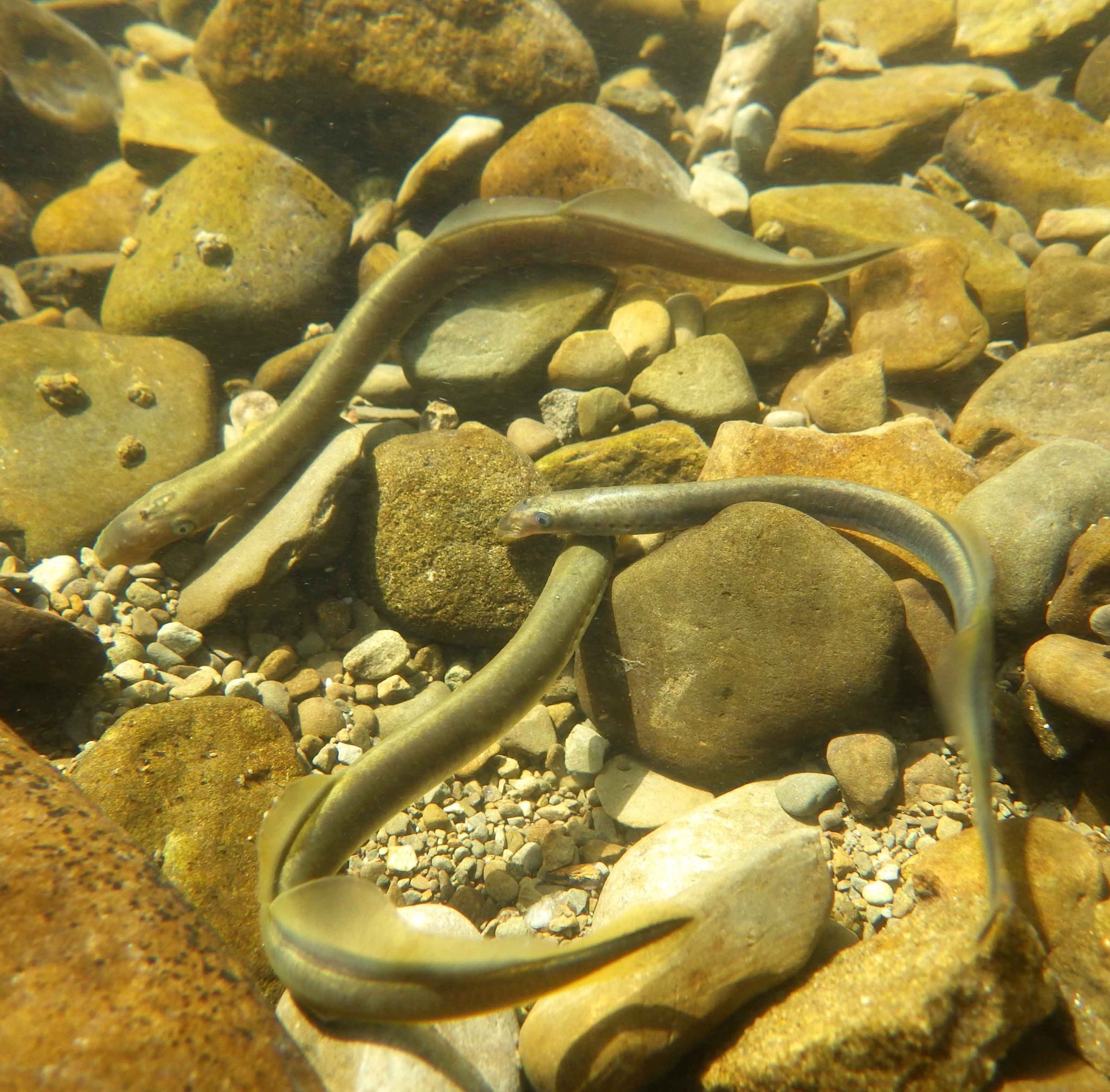
The Brook lampry (Lampetra planeri), the smallest of the three lamprey species and the only one that spends its whole lifecycle in freshwater.
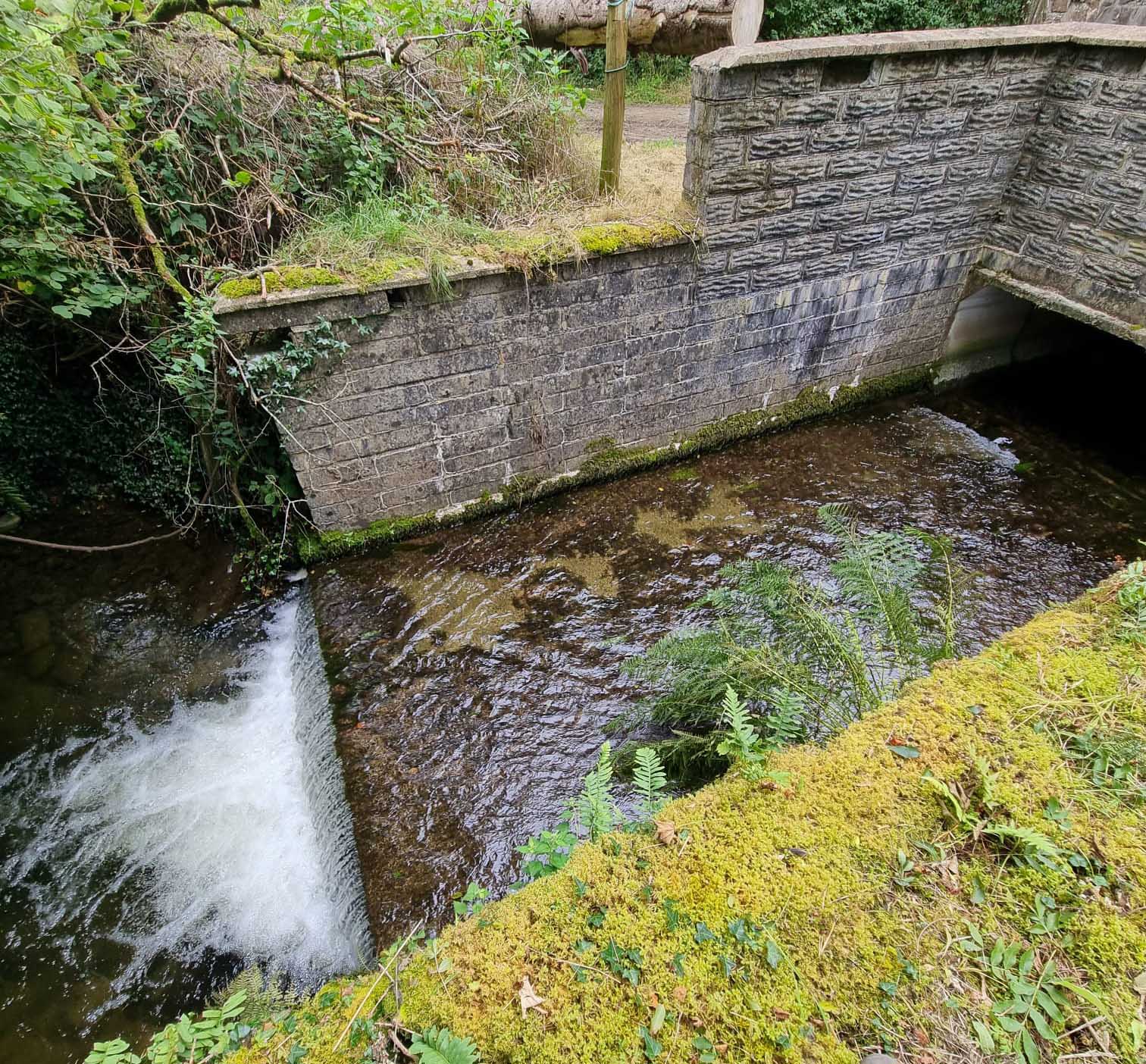
One of the barriers to fish migration on the Nant Hust that the West Wales Rivers Trust have in their sights.
Downloadable Afon Teifi factsheet.
In the 1800s, the Teifi was renowned for its numbers of Atlantic salmon, sewin (sea trout) and brown trout. In 1834 George Agar Hansard wrote that “The Teivy is certainly one of the best, if not the best salmon, trout and sewin river in South Wales” and that “The nearer you ascend towards it(s) source, the more productive it becomes.”
Writing in 1904, Augustus Grimble described the mid-19th century gauntlet of estuary and coracle nets, traps and spears awaiting these fish on their journey to the spawning grounds. He claimed that “…it was stated on good authority that in proportion to its size, more nets were used on the Teifi than any other river in England and Wales.”
In common with other rivers in Wales, he also described how salmon and trout juveniles on their way to sea were caught and sold openly in Cardigan for fourpence a pound. Unsurprisingly, the rod fishery had collapsed by 1868.
A “Board of Conservators” was formed that year to try to control the hyper-exploitation of the Teifi’s fish but they were met with fierce local opposition. The Conservators were prevented from blowing up the falls at Cenarth and thus eliminating a natural check in the upstream migration that presented coracle fishers with an opportunity to fill their nets.
According to Grimble “….the natives stoned the workmen off the river, and as soon as they had been routed, their tools, barrows and planks were broken to pieces and thrown into the water.”
Lead mining & other sources of pollution
Over-exploitation was not the only pressure on Teifi salmon and sewin at that time. A slate mine in Cilgerran was reported as causing problems, as was the pollution from four lead mines that had opened near to the river’s source.
Jim Perrin, in his book “Rivers of Wales” mentions the death of an elephant in Tregaron in 1848 that was part of a travelling menagerie, apparently from lead poisoning. It took another thirty years before authorities acknowledged that the river water might be a problem for the local human population too.
Pollution from the long disused mines is still an issue for the Teifi today. According to the latest assessments by Natural Resources Wales, waterbodies at the very top of the catchment are failing due to elavated levels of zinc, cadmium and lead from the abandoned mines.
Moving downstream, other pressures on the Teifi’s water quality start to come into play, namely agriculture and water company discharges.
And sadly, the river has suffered some catastrophic pollution events. On 17th December 2016, around 44,000 gallons of pollutant leaked into it from an anaerobic digestion plant near Tregaron, killing an estimated 18,000 fish on a five-mile reach. In February 2022, up to 70,000 gallons of slurry flowed from a collapsed farm store into the Afon Clettwr, a tributary of the Teifi. That too resulted in a significant fish kill.
Teifi vampires
One of the reasons for the river’s Special Area of Conservation (SAC) designation is that it is home to three fish species, otherwise known as the “vampire fish.” The Sea lamprey (Petromyzon marinus) is an unnerving, three to four foot eel-like creature that migrates into rivers such as the Teifi in late spring and early summer to spawn.
Juveniles spend several years in the river, mostly as filter feeders, before they migrate to sea. It is in this stage of their life cycle that they become hematophagous feeders, attaching themselves to other fish and using their circular rows of teeth and tongue to remove their hosts’ flesh and blood.
Two other species of lamprey also inhabit the Teifi and are the reason why many of the river’s tributaries are also SAC-designated. The European river lamprey (Lampetra fluviatilisis) is smaller than the Sea lamprey but is also anadromous, migrating from the sea into rivers to spawn. It too is parasitic, as is the even smaller (5-7 inches) Brook lamprey (Lampetra planeri), which resides entirely in freshwater.
Once a prized food fish and reputed to be responsible for King Henry I’s demise, the three lamprey species are highly protected today. Although the last assessment of their numbers in the Teifi was in 2005, their status remains “unfavourable,” with barriers to migration, habitat loss, over-abstraction and excess sediment being the main pressures on them.
Hope for the Teifi
West Wales Rivers Trust have been working hard to revive the lampreys’ fortunes, along with those of the salmon and sewin in the Teifi. In partnership with Ceredigion County Council and local farmers, they completed their Phosphate Reduction and Mitigation (PRAM) Project last year.
As well as reducing the amount of farm nutrients entering the river, the project restored habitat along the Teifi and its tributaries. This prevents excessive amounts of sediment entering the river, crucial for successful lamprey and salmonid spawning. The trust is also resolving barriers to fish migration with two weirs on the Nant Hust marked for work this winter.
A huge effort is needed to restore the Teifi to something like the river it was. The trust has also been working with West Wales Nutrient Management Board on “sediment pathways,” identifying and resolving ways in which soil and nutrients enter the river.
There are also plans for a Teifi “demonstrator” project, paving the way for an all-Wales approach to river restoration. Afonydd Cymru and West Wales Rivers Trust are currently helping Welsh Water and Natural Resources Wales in their application to the Ofwat Innovation Fund, ensuring it focuses on all the contributing factors to the river’s problems (including agriculture, forestry and septic tanks), not just those of the water company.
Of course, every river in Wales ultimately depends on the dedication and support of local people and groups for their future health. Happily, West Wales Rivers Trust’s “Adopt A Tributary” scheme is going particularly well in the Teifi, with 23 tributaries and reaches of the main stem now being adopted by volunteers, protected by the extra eyes and ears. A dedicated local group, Save the Teifi, supported by the trust are working to champion the river and fight for improved river health, including carrying out water quality monitoring.
West Wales Rivers Trust are also devising a “People’s Plan for the Teifi” and want to gather the views, ideas, and hopes of everyone who cherishes a river that remains today an important part of Wales’s heritage, economy, and culture.
Our thanks to West Wales Rivers Trust for their help with information and photos.
References & More Information:
Afon Teifi/ River Teifi Designated Special Area of Conservation (SAC) – JNCC
The Teifi and its tributaries – Discover Ceredigion
Afon Teifi Core Management Plan – Natural Resources Wales
River Teifi SAC Assessment for Lampreys – Natural Resources Wales
“Rivers of Wales.” Jim Perrin, 2022, published by Gwasg Carreg Gwalch
“Trout and salmon fishing in Wales.” George Agar Hansard, 1834
“The salmon and sea trout rivers of England and Wales.” Augustus Grimble, 1904

